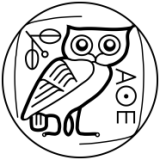This article first appeared in the September 2010 issue of the DUE Newsletter.
In March, the Athena Working Group was chartered by Dean for Undergraduate Education Daniel Hastings and Information Services and Technology Head Marilyn Smith to develop a set of recommendations around public student printing and the Athena clusters. This was in direct response to the two Institute-wide Planning Task Force recommendations focused on Athena:
In mid-September, the working group delivered its phase one recommendations to Hastings and Smith as well as the MIT Council on Educational Technology.
Key findings included:
In the meantime, all the stakeholders have agreed to move ahead with the phase one recommendations on student printing that will improve service while reducing waste and the impact on the environment. These will be implemented over the fall term with likely rollout during Independent Activities Period. This includes:
In March, the Athena Working Group was chartered by Dean for Undergraduate Education Daniel Hastings and Information Services and Technology Head Marilyn Smith to develop a set of recommendations around public student printing and the Athena clusters. This was in direct response to the two Institute-wide Planning Task Force recommendations focused on Athena:
- The need for a “greener” printing process on Athena that reduced waste
- An assessment of the efficient use of space currently dedicated to Athena Clusters
In mid-September, the working group delivered its phase one recommendations to Hastings and Smith as well as the MIT Council on Educational Technology.
Key findings included:
- Athena, as an environment, has definitely transitioned from being our students’ primary computing environment to being a complement to their personal computers. Athena still adds unique value in the areas of equitable access, applications and space;
- Utilization of Athena clusters by students and other members of the community continues to be significant;
- Students continue to have a strong investment in, need for, and sense of ownership of student technology and study spaces in general;
- Printing cost: the current cost of public student printing is approximately $270,000 per year including IS&T-supplied dorm printers.
In the meantime, all the stakeholders have agreed to move ahead with the phase one recommendations on student printing that will improve service while reducing waste and the impact on the environment. These will be implemented over the fall term with likely rollout during Independent Activities Period. This includes:
- Implement a hold-and-release infrastructure for public student printing, requiring releasing of a job at the printer and requiring authentication at release. (This was piloted over the summer in W20 and Baker house);
- Formally include centrally supplied dorm printers and Athena library printers in public student printing;
- Redistribute public student printer stations to optimal locations on campus;
- Implement a generous quota and nominal fee for over quota printing that will apply to all users of the printing environment.






